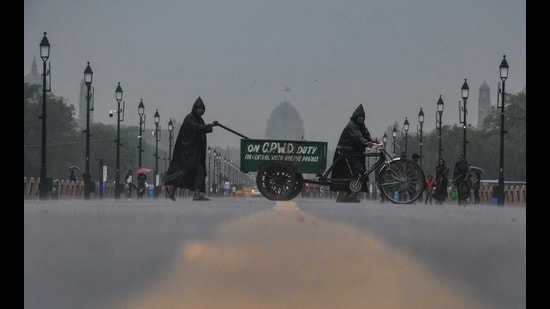Track monsoon changes better
Instead of publishing only its headline numbers, the official agency should add criteria that reflect rainfall’s temporal and spatial variation. This will help communicate the skew with clarity for everyone
The southwest monsoon started withdrawing from the country last week, and by official accounts, it has been normal, with 7% more rain than usual. However, an analysis of the gridded data from the India Meteorological Department (IMD) shows that the 2022 monsoon was extreme in its spatial and temporal vagaries. India received 931 mm of rain in the June-September period, the official summer monsoon. But 31 of these 122 days reported a deficit of 20% or more, and 41 had a surplus of 20% or more. Moreover, only in half of the days was the rainfall within the 20% limit of the 1961-2010 long period average — indicating that rainfall was concentrated in short bursts, followed by periods of no showers.

There were similar geographical differences. The four states of the Gangetic plains — Uttar Pradesh, Bihar, Jharkhand and Bihar — that are responsible for a third of the country’s rice output reported a rainfall deficit of 20% or more. Rainfall did improve towards the end of the season, but these four states still received 22.2% less rain than the rest of the country, opening up the most significant gap with the national average since 1901. Such skewed weather patterns have a knock-on effect on agriculture, crop sowing patterns and yield, and the larger economy. With seasonal patterns changing, rise in food prices no longer follow old patterns but are more erratic, as are energy demands and fuel needs. As HSBC chief economist Pranjul Bhandari noted in July, reservoir levels (and not rainfall numbers) may now become a more accurate indicator of food production and, thereby, inflation volatility. All this has ramifications for policymakers trying to rein in inflation and deciding when to tweak rates.
Scientists point out that the climate crisis is bound to make monsoon volatility more likely. The declaration of a “normal” monsoon in such conditions will not only be a half-truth but will also undermine the credibility of official forecasts. How can we fix this problem? The IMD has data on which regions or months experienced “normal” rain. Instead of publishing only its headline numbers, the official agency should add criteria that reflect rainfall’s temporal and spatial variation. This will help communicate the skew with clarity for everyone.
All Access.
One Subscription.
Get 360° coverage—from daily headlines
to 100 year archives.



HT App & Website







